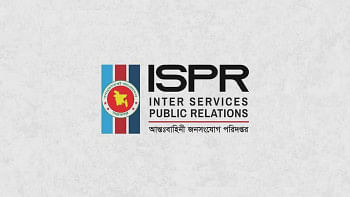Importing more soybeans from US could ease Trump tariffs

Increasing soybean imports from the United States could help narrow the trade gap between Bangladesh and its biggest single-nation apparel market, according to an American industry group.
And this may ultimately help ease the 35 percent additional tariff on Bangladeshi goods entering the US, said Kevin Roepke, regional director for South Asia and Sub-Saharan Africa at the US Soybean Export Council (USSEC).
Roepke, who also sits on the board of the US-Bangladesh Business Council, pointed out that while the US is the largest foreign investor in Bangladesh and the top export destination for Bangladeshi garments, its presence in agricultural trade remains limited.
In an interview with The Daily Star, he described soybeans and soybean meal as the "lowest-hanging fruit" for reducing the $6 billion trade gap. "Just soybeans and soybean meal alone could account for $1 billion in trade annually," he said.
Currently based in Dubai, Roepke came to Dhaka last week to visit local soybean crushing mills and meet with millers, importers and traders, as imports of US soy products continue to rise.
This year, imports of soybeans and soymeal from the US have already crossed $450 million, up from $348.9 million in 2024.
According to Roepke, local traders are preferring US soybeans due to competitive pricing and higher quality.
Still, he believes there is room for improvement.
"Why isn't the US the largest supplier of soybeans to Bangladesh? It is a fundamental question when the US is already your biggest investor and export market," he said.
Bangladesh's soybean market is worth more than $2 billion. In 2024, local traders imported 700,000 tonnes of soybeans and 150,000 tonnes of soymeal from the US.
Expressing optimism about future exports, the USSEC executive called on the private sector to play a more active role in ongoing trade talks and urged policymakers to treat soy as a strategic commodity in efforts to rebalance trade between the two countries.
"US soy should be the foundation," said Roepke, noting that soy is currently the top US agricultural export to Bangladesh by value.
"We peaked in 2019–2020. While sales are slightly up this year, the long-term trend is downward. That is concerning," he said.
Asked about freight costs, Roepke dismissed it as a key issue. "Freight charge is not the issue, it is the quality," he said.
"US soy is the gold standard in the industry. It has the lowest damage, the driest quality, and the highest digestibility for poultry. Our soy is grown with zero deforestation, making it the most sustainable option, which aligns with Bangladesh's climate priorities."
Roepke, who holds an MBA from the Massachusetts Institute of Technology (MIT), added that agricultural trade decisions are driven by business-to-business links rather than government-level deals.
This makes the role of Bangladeshi importers, feed millers and processors critical. "We are here to listen to the private sector, not dictate. The government may set the tone, but the industry drives the action. That is why we have had a presence here since 1996."
He also called for the soybean and livestock feed sectors to be provided with equal representation in tariff discussions, which are now dominated by garment exporters.
"These importers can be the problem-solvers. They are the ones who can actually shift the trade balance by sourcing more from the US."
Roepke also highlighted other barriers, such as the advanced income tax (AIT), which he said has become a major hurdle for local soybean importers and refiners.
"AIT is an additional burden," he said.
He also pointed out that limited gas supply in industrial zones is adding to the challenges faced by many new processors.
Apart from soy, the USSEC sees potential for Bangladesh to emerge as a regional agro-processing hub.
"We are already in talks with local firms interested in exporting tilapia and pangas to the US, fed with US soy. That is a blue-ocean opportunity."
Roepke urged the government to support this diversification strategy, especially as global demand for sustainable, protein-rich foods grows.
Despite some uncertainty in the business environment and its impact on trade negotiations, he said the USSEC remains "cautiously optimistic."
"We are hopeful. Ongoing tariff negotiations may not yield instant results, but the direction is encouraging. If Bangladesh increases imports from the US, we believe the USTR will respond positively."
Bangladesh is currently the third-largest apparel exporter to the US, holding a 9.3 percent share of the market. While garments dominate trade discussions, the USSEC insists soy deserves equal strategic focus.
Roepke pointed out that the US offers duty-free access to 39 African nations under the African Growth and Opportunity Act (AGOA), though many have failed to make full use of it.
"Bangladesh has the capacity. The challenge is to turn opportunity into action," he concluded.

 For all latest news, follow The Daily Star's Google News channel.
For all latest news, follow The Daily Star's Google News channel. 



Comments